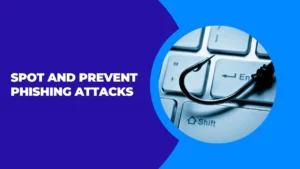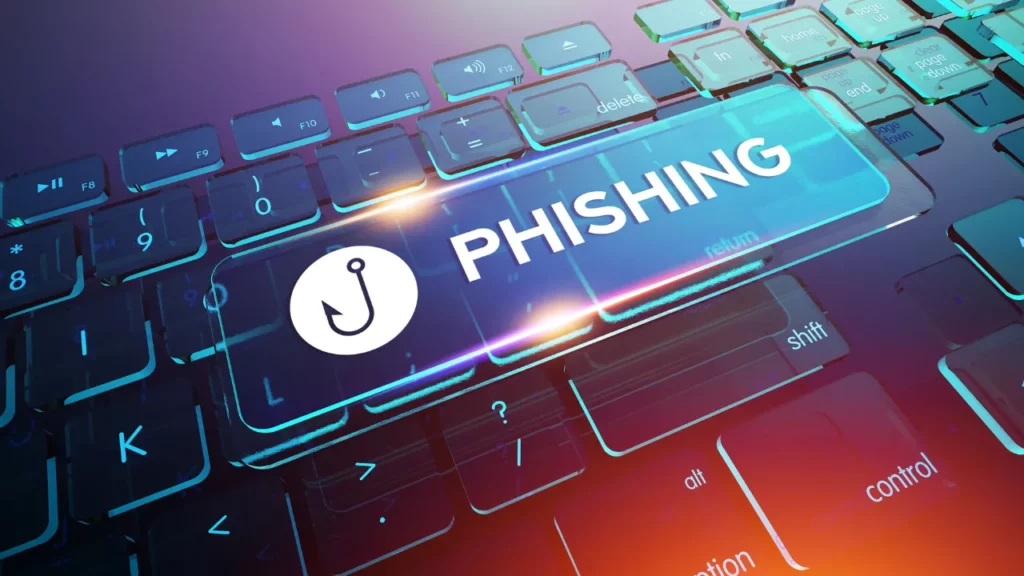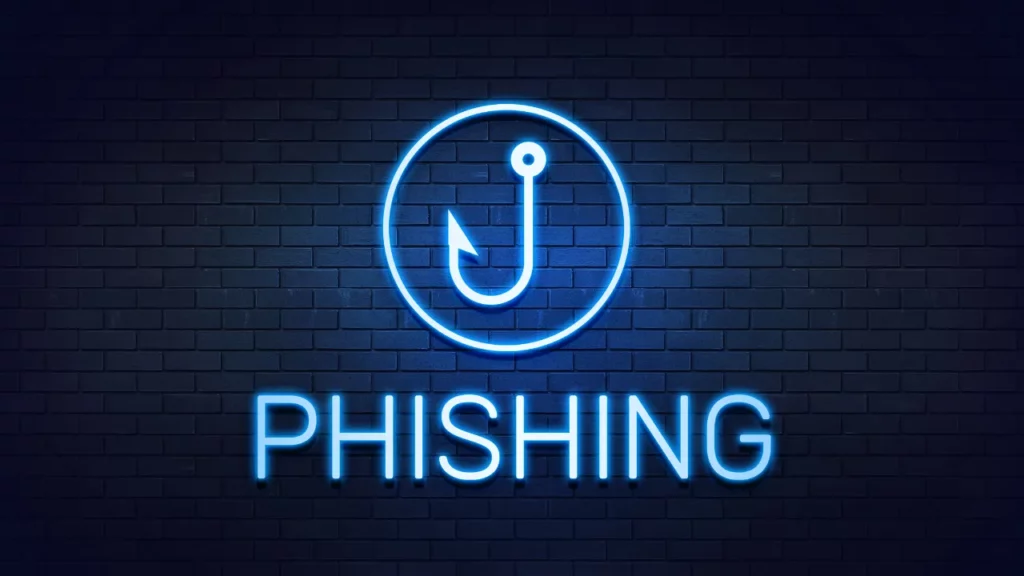Physical Address
304 North Cardinal St.
Dorchester Center, MA 02124
Physical Address
304 North Cardinal St.
Dorchester Center, MA 02124

In today’s digital age, one of the biggest threats to cybersecurity is phishing attacks. Phishing scams trick people into sharing their personal and financial information with cybercriminals who then use it for fraudulent activities. In this blog post, we will cover everything you need to know about phishing attacks, including their origin, evolution, and the different types of phishing attempts.
We will also delve into how these attacks work and provide tips on how to recognize a phishing attempt. Additionally, we will discuss new anti-phishing strategies that can help prevent these attacks in 2024. Stay tuned and learn how to protect yourself and your business from potential phishing attacks.

Phishing, a cybercrime technique aimed at tricking individuals into revealing their sensitive information, has evolved over time, becoming more sophisticated and difficult to detect. Cybercriminals employ social engineering tactics to manipulate victims, gaining access to their personal data.
Phishing attacks can occur through various channels, including email, voice calls, and text messages. Staying informed about the latest phishing techniques is crucial in safeguarding yourself and your data. By understanding the origin and evolution of phishing, you can better equip yourself against these attacks. Stay vigilant and be aware of the tactics employed by phishers.
Protect your bank account, usernames, and account numbers from these scammer’s deceitful schemes. Enhance your phishing protection by staying informed about the latest types of attacks and how to recognize them.
Phishing refers to the fraudulent practice of tricking individuals into providing their personal information, such as passwords or credit card numbers. Cybercriminals often employ social engineering tactics or pretend to be a trusted entity to manipulate victims. Phishing attacks can take place through various channels like email, phone calls, or text messages.
The ultimate objective of phishing is to gain access to sensitive data for financial gain or identity theft. These attacks can have severe consequences for both individuals and organizations. It is crucial to stay vigilant and educate oneself about phishing scams to avoid falling victim to these deceptive practices.

Phishing attacks emerged in the 1990s with the rise of email communication. The term “phishing” was coined in the early 2000s to describe these fraudulent practices.
Over the years, phishing attacks have become more sophisticated, targeting individuals and organizations of all sizes. Cybercriminals constantly adapt their techniques to bypass security measures and exploit vulnerabilities.
Phishing remains a prevalent and significant threat in the digital landscape, with attackers using tactics like spear phishing, scam emails, and phishing websites. It is important to stay vigilant and implement phishing protection measures to safeguard sensitive information from being compromised.
Read More: How to Prevent, Detect, and Recover from Ransomware Attack

Phishing attacks come in various forms, with email phishing being the most common. Cybercriminals send deceptive emails, aiming to trick recipients into revealing personal information.
Another type is voice phishing, or vishing, where attackers make phone calls, posing as legitimate entities to collect sensitive data. SMS phishing, or smishing, involves using text messages to deceive individuals into providing their personal information or clicking on malicious links.
Phishing attacks can also occur through other channels like social media, instant messaging, or fake websites. It is crucial to be aware of these types of attacks and how to protect yourself against them.
Email phishing is a prevalent and significant threat in the digital landscape. It is the most common form of phishing attack, where cybercriminals send deceptive emails that appear to be from trusted sources.
These attackers often use urgent or enticing language to trick recipients into taking action. It is important to be cautious of suspicious email addresses, spelling errors, and requests for personal or financial information.
One should always verify the legitimacy of emails before responding or taking any action. Remember, these emails may contain malicious links or attachments that can lead to the theft of sensitive information. Stay vigilant and protect yourself from falling victim to phishing scams.
Voice phishing, also known as vishing, is a type of cyber attack where criminals make phone calls pretending to be representatives from trusted organizations. These attackers use social engineering techniques to manipulate victims into revealing their personal or financial information.
It’s important to be cautious of unsolicited calls asking for sensitive data and always verify the identity of the caller before sharing any personal information. Remember that legitimate organizations will never ask for your personal details over the phone unless you initiate the call. Stay vigilant and protect yourself against this type of scam.
SMS phishing, also known as smishing, is a form of phishing attack that takes place through text messages. Cybercriminals employ deceptive tactics by posing as reputable institutions such as banks, government agencies, or other trusted entities.
These messages often contain links to fraudulent websites or solicit personal information from recipients. It is crucial to exercise caution when encountering unsolicited text messages requesting sensitive data or containing suspicious links.
Avoid clicking on any links or disclosing personal information in response to such messages. By remaining vigilant and refraining from engaging in these deceitful practices, individuals can protect themselves from falling victim to SMS phishing scams.

Phishing works by exploiting human vulnerabilities and trust to deceive individuals into revealing sensitive information. Cybercriminals use tactics like social engineering and impersonation to manipulate victims.
They send deceptive emails, calls, or texts to trick people into clicking on malicious links or sharing personal data. Understanding phishing is crucial to staying vigilant and protecting oneself against potential attacks.
Link manipulation is a common technique employed by cybercriminals in phishing attacks. These attackers disguise malicious links to make them appear legitimate or trustworthy. To achieve this, they may use URL shorteners, redirecting links, or other deceptive methods to trick individuals into clicking on them.
Therefore, it is crucial to exercise caution and hover over links to verify their destination before clicking on them. This is especially important when receiving links through emails, text messages, or any other communication channels.
It is advisable to be wary of suspicious or unsolicited messages and links, as they could potentially lead to phishing scams or other types of cyberattacks.
Social engineering is a psychological manipulation tactic utilized by cybercriminals in phishing attacks. It involves the manipulation of individuals, exploiting emotions, authority, urgency, or curiosity to trick victims into revealing sensitive information or performing specific actions.
To avoid falling victim to social engineering tactics, it is crucial to be cautious of unexpected requests for personal information, unusual behavior from trusted entities, or suspicious messages that evoke a sense of urgency.
Developing awareness of social engineering techniques is essential in recognizing and avoiding potential phishing attacks. By staying vigilant and being mindful of these red flags, individuals can better protect themselves against social engineering-based phishing scams.
Recognizing a phishing attempt is crucial in protecting yourself from online scams. Be cautious of emails, calls, or messages asking for personal information or login credentials. Watch out for urgent requests or time-sensitive language that creates a sense of urgency.
Be wary of suspicious attachments or links, and pay attention to spelling and grammar errors in phishing emails. Stay vigilant, especially when dealing with emails claiming to be from trusted entities like banks or social media platforms.
When it comes to protecting yourself from phishing attacks, it’s important to be vigilant and watch out for warning signs in emails, calls, and messages. One of the key warning signs is receiving emails that request sensitive information like passwords or credit card numbers. These types of requests should always raise a red flag.
Similarly, if you receive phone calls or text messages asking for personal details or financial information, it’s best to be skeptical and exercise caution. Another important step is to verify the sender’s email address or phone number to ensure it is legitimate. Phishing messages often contain grammatical errors or unusual requests, so if something doesn’t seem right, trust your instincts.
Lastly, it’s crucial to avoid clicking on suspicious links or downloading attachments from unknown sources, as these can be vectors for malware or other types of attacks. By staying alert to these warning signs, you can protect yourself from falling victim to phishing scams.
When navigating the internet, it’s crucial to be vigilant and aware of potential phishing attacks. One way to protect yourself is by being mindful of suspicious URLs and website layouts. Start by checking the domain name in the URL to ensure it matches the website you expect to visit.
This helps prevent falling for fake websites that mimic legitimate ones. Additionally, keep an eye out for signs of a fake website, such as poor design or mismatched logos. These red flags can indicate that the site is not trustworthy. Moreover, it’s important to avoid entering sensitive information on websites that do not have secure connections (https://).
Websites with secure connections encrypt your data, making it harder for attackers to intercept. Be cautious of websites that ask for excessive personal details or credit card information, as legitimate websites usually don’t require such information. Lastly, pay attention to warnings from your browser about potential security risks.
These warnings serve as an extra layer of protection against phishing attempts. Protect yourself from phishing scams by staying vigilant and being cautious while browsing the internet.

Preventing phishing attacks in 2024 requires staying updated with the latest anti-phishing strategies and educating yourself and your employees. Additionally, using strong passwords, enabling two-factor authentication, and regularly updating software are essential steps to protect against phishing.
In 2024, the fight against phishing attacks will continue with new strategies. Implement advanced email security measures like spam filters and authentication protocols. Train employees to identify and report phishing attempts through simulated exercises.
Utilize machine learning algorithms to detect and block evolving techniques. Foster a cybersecurity culture within your organization and collaborate with trusted vendors for proactive protection against phishing.
In the ever-evolving world of cyber threats, it is crucial to stay one step ahead of phishing attacks. By understanding the different types of phishing attacks and how they work, you can better equip yourself to recognize warning signs and protect your personal information.
It’s important to be cautious when interacting with emails, calls, and messages, and to be vigilant for suspicious URLs and website layouts. As we move into 2024, new anti-phishing strategies will continue to emerge.
Stay informed and up-to-date on the latest techniques to safeguard your digital security. Remember, prevention is key when it comes to protecting yourself from phishing attacks.